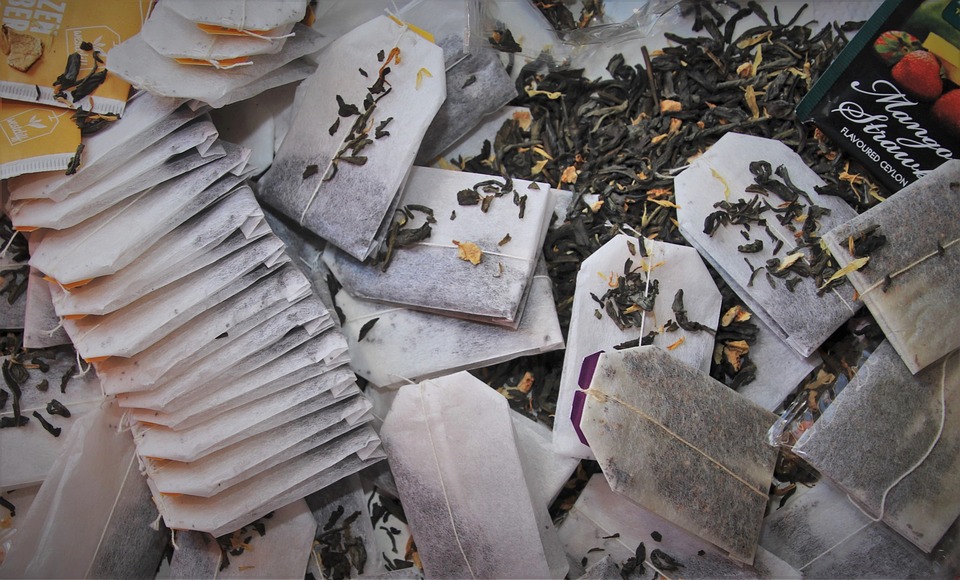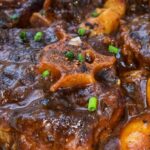Contents
- 1 Why Gallon Tea Brewing Matters
- 2 Determining Tea Bag Quantities
- 3 Mastering Proper Brewing Techniques
- 4 Choosing Regular or Family Tea Bags
- 5 Enhancing Your Tea Experience
- 6 Customizing Your Perfect Tea
- 7 Advanced Brewing Insights
- 8 Luzianne Gallon Tea Brew Guide
- 9 Conclusion
- 10 Appendix A – Measurement Conversions
- 11 Appendix B – Extra Brewing Tips
- 12 Appendix C – Serving Information
Why Gallon Tea Brewing Matters
Tea is incredibly versatile. It can be served hot or cold, sweetened or unsweetened, plain or flavored. Families and large gatherings benefit from gallon batches. Understanding proper ratios prevents weak tea from too few bags or overpowering bitterness from too many. Plus, buying bulk tea bags saves money. Discover tips for brewing the perfect gallon of tea!
Determining Tea Bag Quantities

Mastering Proper Brewing Techniques
Follow these steps for optimally flavorful tea:
- Bring water to a rolling boil over high heat.
- Remove from heat and add appropriate number of tea bags.
- Cover and steep 3-5 minutes for black tea, 2-3 minutes for green.
- Remove tea bags. Add sugar or other sweeteners if desired.
- Avoid over-steeping, which causes bitterness.
For best flavor extraction, do not boil tea bags. Steep covered to prevent evaporation. Sweeten while hot to fully dissolve sugar. These simple tricks yield great-tasting tea every time.
Choosing Regular or Family Tea Bags
Not all tea bags are equal. Regular tea bags contain approximately 1.5 grams of tea. Family-size or jumbo bags have about 2.5-3 grams. The larger bags allow more room for tea to expand and infuse. A few family bags can replace multiple regular bags. Both work fine, so choose based on convenience and cost factors.
Enhancing Your Tea Experience
Beyond great flavor, tea offers many potential health benefits:
- Black tea contains antioxidants that may boost heart health.
- Green tea has anti-inflammatory properties that aid immune function.
- Herbal teas like chamomile provide soothing properties.
When buying tea bags, look for unbleached, biodegradable materials. Avoid plastic staples or nylon bags. Eco-friendly choices make a positive impact.
Proper storage keeps tea fresh and flavorful. Store sealed at room temperature away from moisture, light, and strong odors.
See more : Easy Guide – Cook Tender Oxtails on the Stovetop Today
Water quality affects taste. Filtered or bottled water makes the best-tasting tea. Avoid distilled water, which can brew weaker tea.
Customizing Your Perfect Tea
One beauty of brewing tea by the gallon is the ease of tweaking flavors to suit your preferences.
Caffeine – Black tea has approximately 40-75mg caffeine per 8oz cup. Green has 35-70mg. Herbal teas are caffeine-free. Control caffeine levels by adjusting tea type and quantities.
Sweetness – Add sugar, honey, agave, or other sweeteners. For cold tea, increase sweetness since chilling dulls flavor perception.
Fruit flavor – Add sliced fruit like lemon, orange, lime, or berries. The hot water infuses the fruit essence into the tea.
Herbs and spices – Try sachets of cinnamon, clove, mint, lavender, or crushed ginger. Use sparingly to complement tea flavors.
Milk and cream – A touch of milk softens black tea’s bitterness. Cream lends richness. Condense milk sweetens iced tea.
Presentation – Serve hot tea in pretty teapots or mugs. Chill tea in pitchers or infusion bottles for easy pouring. Garnish cold tea with citrus slices or fresh herb sprigs.
The options are endless! Tweak these variables for the perfect personalized gallon of tea.
Advanced Brewing Insights
Looking to refine your big batch tea technique? Try these expert tips:
Avoid over-boiling water – Excess boiling depletes oxygen and alters water’s taste-revealing properties.
See more : Does Dark Chocolate Boost Energy? Caffeine Secrets Revealed
Use loose tea leaves – The expanded leaves yield more nuanced flavor than compressed bag tea. Use a tea infuser to strain.
Try cold brewing – Steeping tea overnight in cold water results in a smooth low-acid drink.
Experiment with vessels – Glass, ceramic, or stainless steel impart fewer flavor artifacts versus plastic.
Match tea to food – Bold black teas suit savory foods. Green tea’s mellowness complements sweets.
Compare brewing methods – From French press to percolating, different techniques impact taste.
Now that you’re a tea pro, develop your own signature tea blends and recipes. Tea takes practice, so enjoy the journey of enhancing and expanding your tea brewing repertoire.
Luzianne Gallon Tea Brew Guide
For delicious Southern sweet tea, follow this foolproof Luzianne® recipe:
Ingredients
- 3 family-size Luzianne® tea bags
- 1 cup white sugar, granulated sugar, or sweetener
- 1 gallon water
Instructions
- Bring 1 gallon of water to a rolling boil.
- Remove from heat and add 3 family-size Luzianne® tea bags.
- Cover and steep 5 minutes.
- Remove tea bags and discard.
- Stir in 1 cup of sweetener until dissolved.
- Serve over ice. Refrigerate leftover tea.
For a half-gallon: Use 2 tea bags and 1/2 cup sweetener.
For a 2-quart pitcher: Use 1 tea bag and 1/4 cup sweetener.
Adjust sweetener to taste preference. For stronger tea, use additional bags.
Conclusion
With the proper techniques, you can reliably brew incredible gallon batches of tea. Tea is endlessly adaptable, so customize strength, sweetness, and flavors to your liking. Proper ratios prevent waste and save money while yielding enough tea for gatherings large and small. A well-brewed gallon keeps you refreshed and hydrated. So fill your pitcher and enjoy discovering your perfect tea!
Appendix A – Measurement Conversions
- 1 gallon = 4 quarts = 8 pints = 16 cups = 128 ounces
- 1 quart = 2 pints = 4 cups = 32 ounces
- 1 pint = 2 cups = 16 ounces
Appendix B – Extra Brewing Tips
- Use fresh cold water for best results
- Store tea bags in airtight containers
- Rinse tea vessels with hot water before steeping
- Avoid overfilling vessels to leave room for water displacement
Appendix C – Serving Information
- A full gallon of tea yields approximately 16 servings of 8 ounces each.
- Present tea in clear glass pitchers or beverage dispensers.
- Float citrus slices or fresh herb garnishes for visual appeal.
- Provide flavored syrups, sweeteners, creamers, or lemon wedges for customization.
Chef Angelo Landi has been in the culinary industry for over 20 years, and he has spent the last six of those developing the menu for Coal Vines. His favorite pizza on the menu is the Spicey Meatball, which is made with spicy sausage, pepperoni, and calabrese salami. When he’s not in the kitchen cooking up a storm, Chef Angelo enjoys spending time with his wife and two young children.






